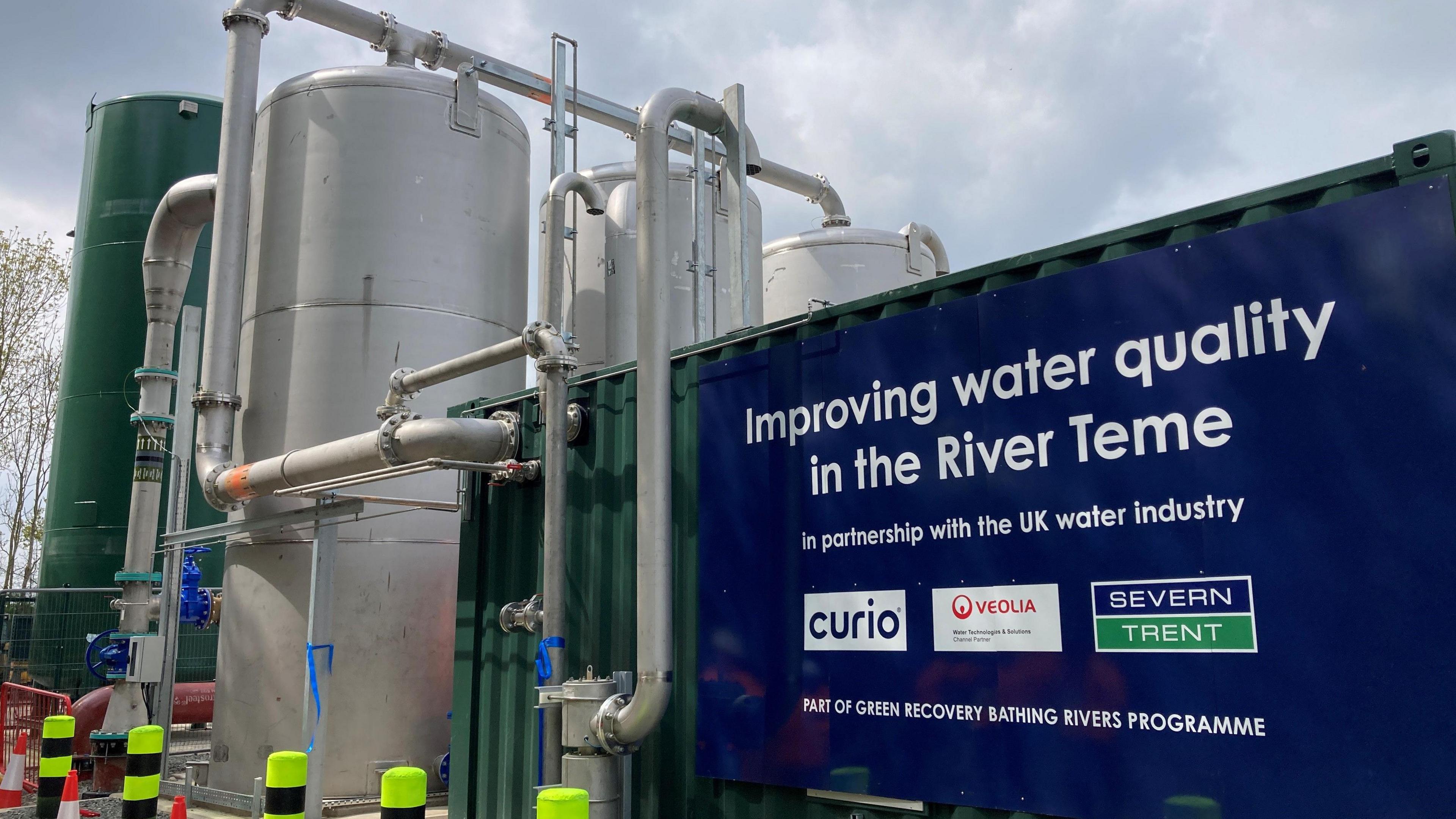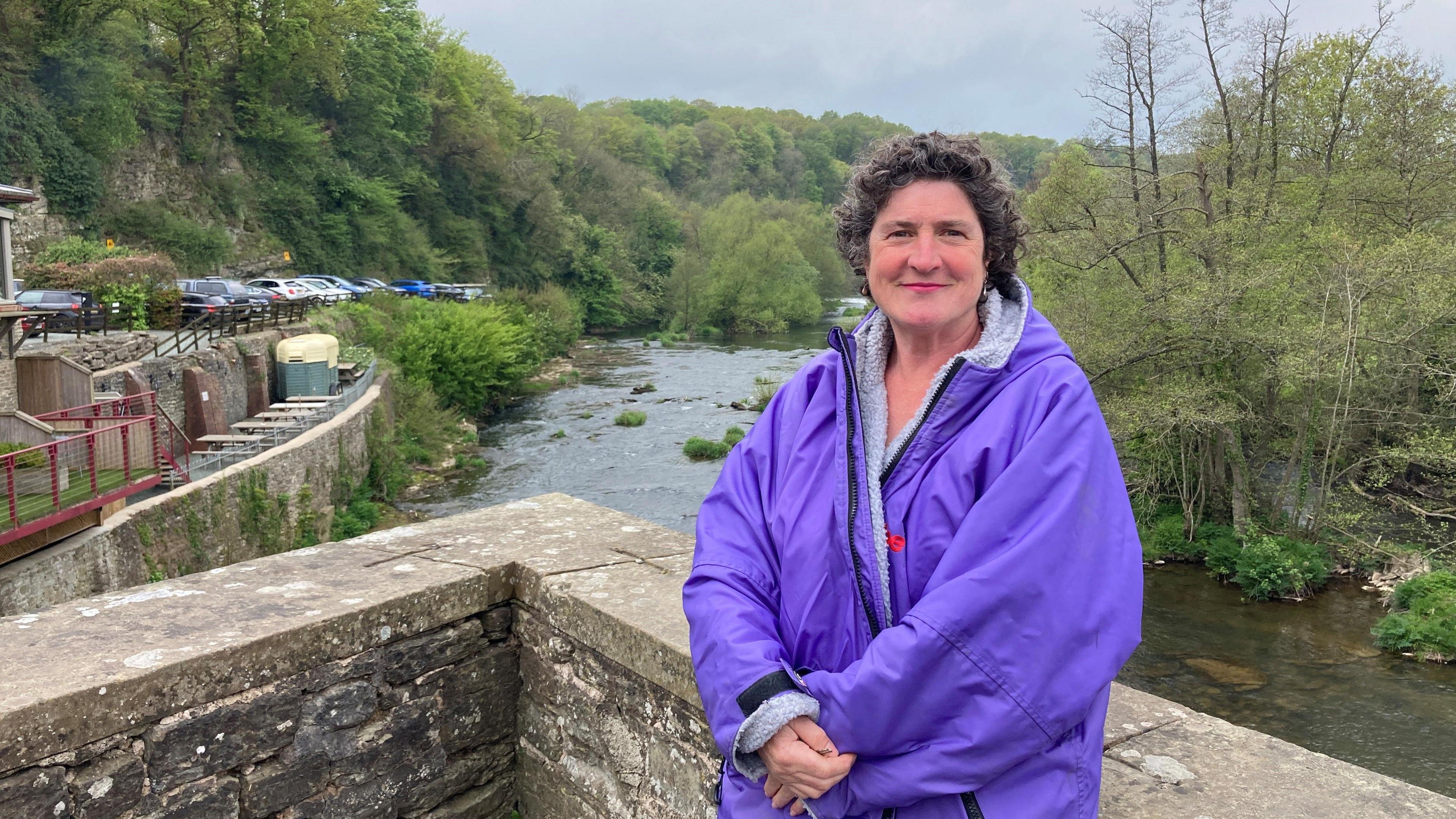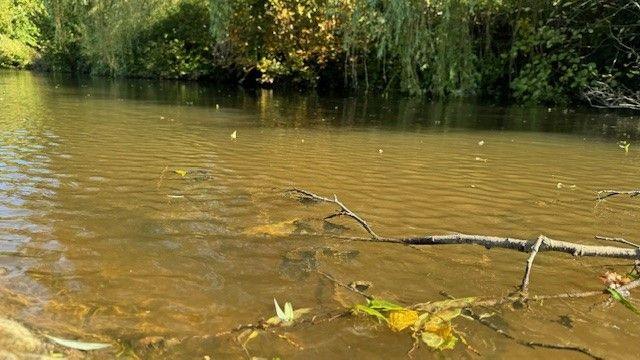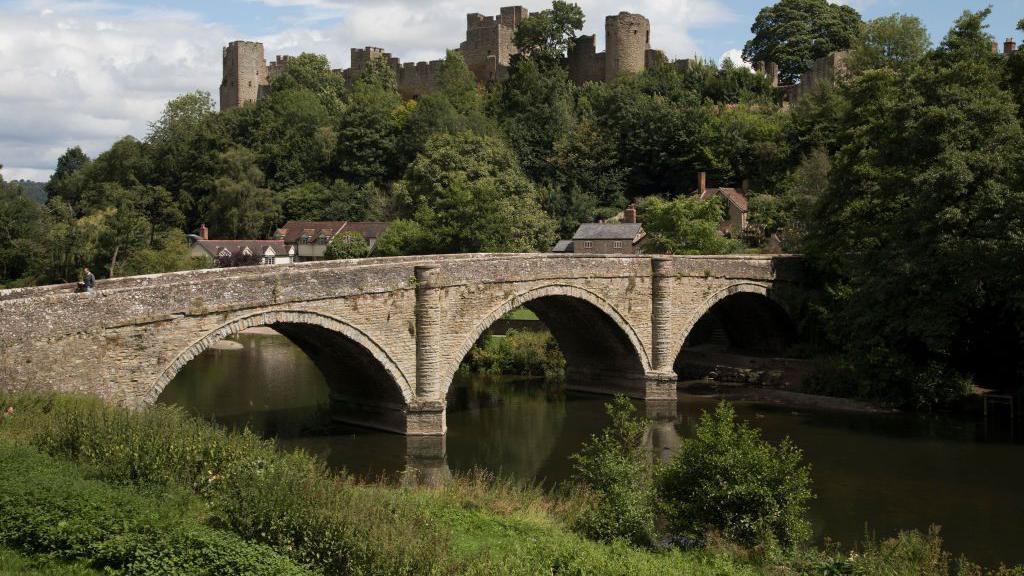Ozone gas to clean river in UK-first £20m project

Ozone gas is pumped into the waste water leaving Ludlow sewage works to remove more pollutants than other plants
- Published
A water firm is using technology worth £20m for the first time in the UK to pump ozone gas into a river to reduce pollutants.
Severn Trent Water is using the process on waste water to clean up the River Teme in Ludlow, Shropshire.
It aims to reduce bacteria, micro pollutants and medications in the water, along with viruses by using the ozone plant on the river.
A stretch of the river was granted bathing water status last year, but the water quality was later designated as poor because of high E. coli levels from sewage and agricultural run-off during floods.
Severn Trent Water said while their current process ensures pollutants are reduced, it does not take out all the bacteria and pharmaceutical chemicals.

Severn Trent programme lead Wilfred Denga says Ludlow is at the forefront of a new innovation.
While the technology has been used on drinking water before, this will be the first time it has been used on waste water.
The ozone gas will be used at the end of sewage treatments before water is returned to the river to provide an "enhanced" process, Severn Trent said.

Open water swimmer Alison Biddulph says more needs to be done to clean up Shropshire's rivers
Campaigners have welcomed the steps taken to reduce pollution in the river, including open water swimmer Alison Biddulph.
She described the River Teme's current water quality as "really good" along with most of Shropshire's other rivers while the weather stayed dry.
However, she said that two or three bathing sites in Shropshire were marked as poor because of high levels of E Coli, which were recorded after heavy rain.
Get in touch
Tell us which stories we should cover in Shropshire
Follow BBC Shropshire on BBC Sounds, Facebook, external, X, external and Instagram, external.
Related topics
- Published25 April

- Published19 November 2024

- Published9 October 2024
